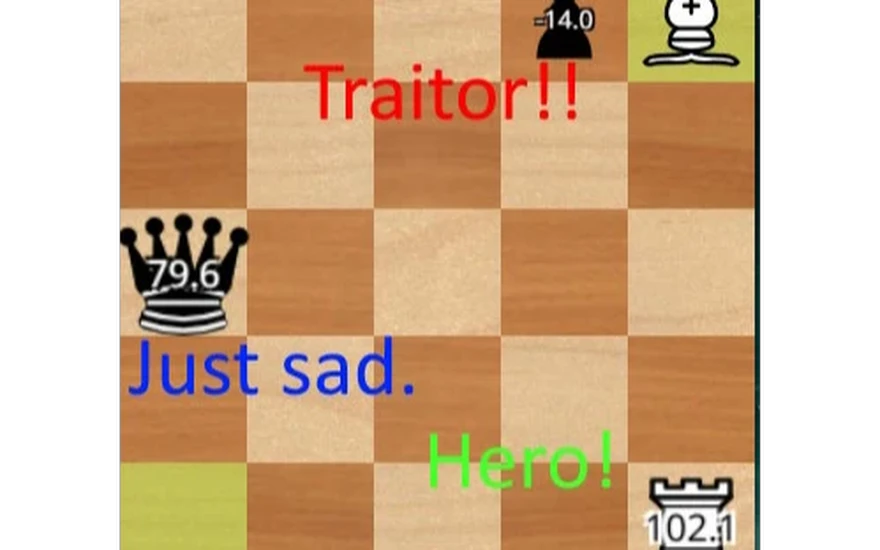
https://siderite.dev/blog/new-chrome-extension-lichess-tools/
The REAL value of chess pieces
... according to StockfishIntro
I've had this idea for a long time and I finally moved my lazy fingers to do it. I was wondering what is the actual value of a chess piece in different positions. My idea was to evaluate the position with an engine, then remove said piece from the position and reevaluate. The value of the piece is the difference.
You might know that I am the developer of the LiChess Tools browser extension so, if I am curious about something chess, I will implement there. In this case, the command /piecevalue which is but one of the commands added to Lichess. It's simple to use, just type /piecevalue in Analysis Board or Game analysis or Studies or Broadcasts.
It takes a while - behind the scenes there is a JavaScript Stockfish 16.1 calculating until depth 20 (10 moves ahead) or whatever you pass to /piecevalue - but the end result is that each piece except the kings are assigned values. And if the value is significantly higher or lower than the "default" value assigned to pieces, the piece will be shown smaller or larger.
Caveat: in the past, major engines were evaluating based on the classical 1-3-5-9 value system, so that if you lose a pawn the evaluation would change with 1. Even the name of the measuring unit for engine evaluations - the centipawn - suggests it's related to the value of pawns. However, there was a schism at one time or another and the values are not as correlated as before. And, as you will see, in critical positions the values of pieces increase or decrease dramatically.
Note: the values from the command are being rounded to the closest deci-pawn value.
Values
So, let's find out the values, as calculated by Stockfish, in the default table setup:
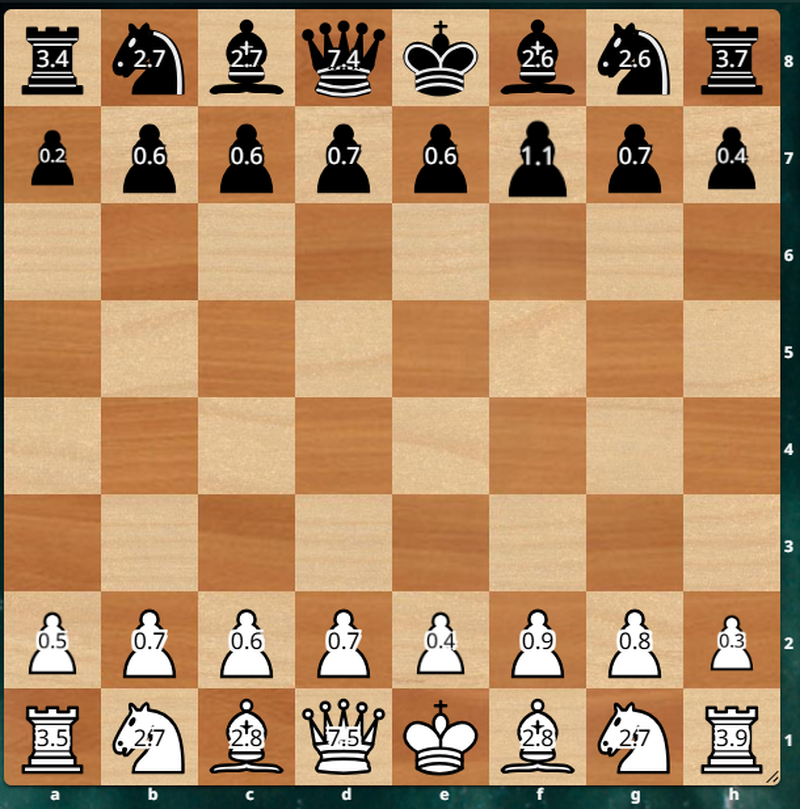
Some interesting things are immediately apparent:
- the values are not aligned with the classic piece values, at least in the starting position
- there are differences between pawn values
- there are differences between pawns and pieces from different sides and different colors
For some reason, the king-side rooks are more important. The f, g and d pawns are most valuable, surprisingly the e-pawn is the lowest rated for White. The a-pawn has almost no value for Black.
Let's make a move or two, see how the situation changes. e4, best by test and all of that:
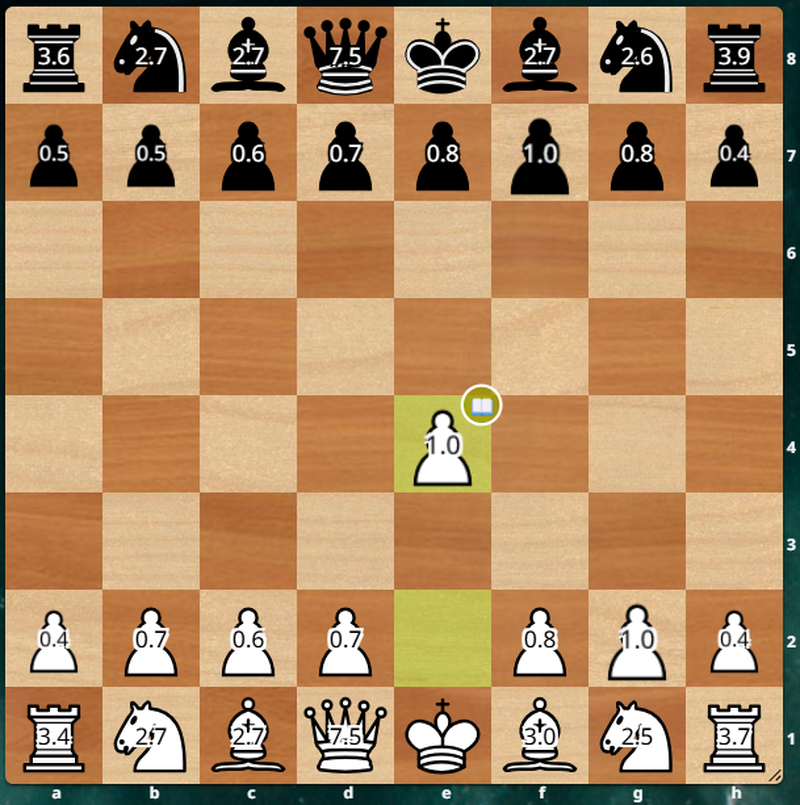
The e-pawn and light squared bishop gain value from advancement on the board or the potential for it. Let's move what Masters chose to reply with to e4, c5:
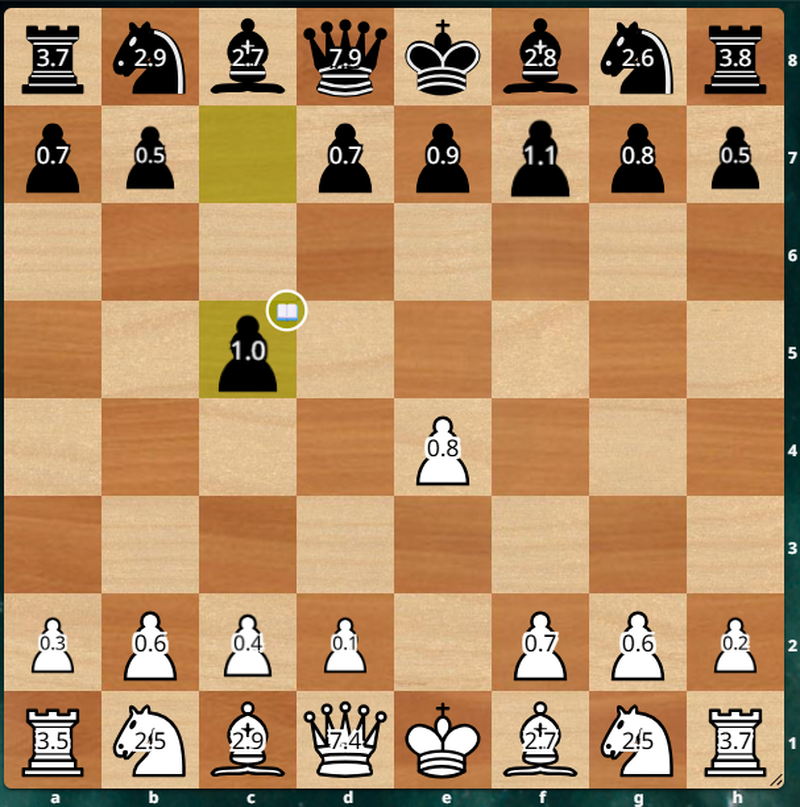
Interestingly, the value of the e4 pawn decreases with c5 being played. c5 and f7 are not superpawns. The light squared bishop has also lost value.
Let's do some more moves based on the most played moves by Masters, the Najdorf: 2. Nf3 d6 3. d4 cxd4 4. Nxd4 Nf6 5. Nc3 a6. More than 100000 Master games in the database for this position. Let's see what changed.
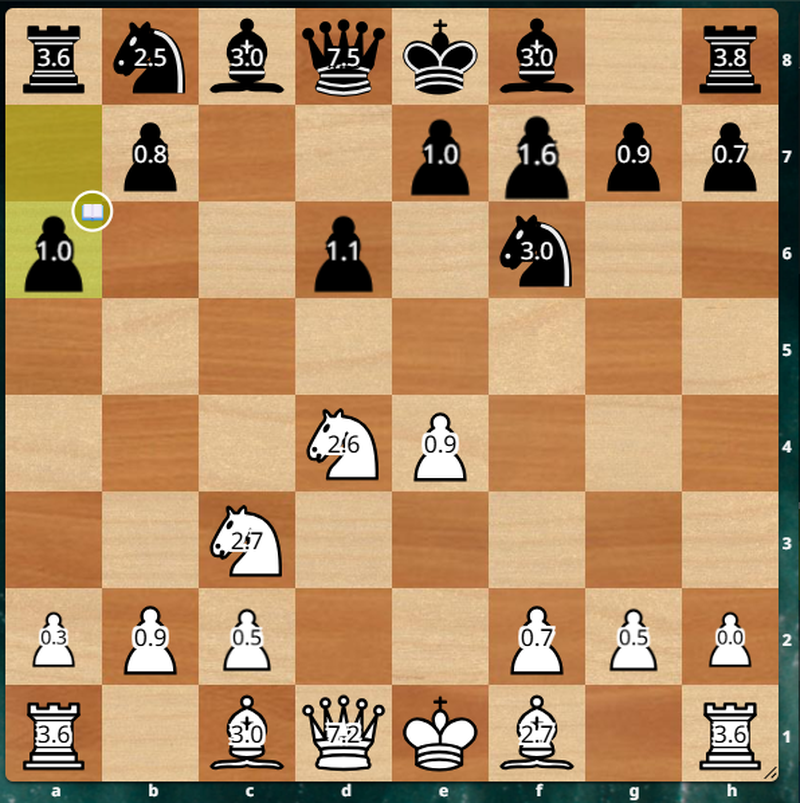
Look at Harry the Pawn! He's useless. In this position, whether it is there or not does not matter. However the Black a-pawn leveled up. Look at f7, if you could take it, you'd be winning.
Let's switch gears for a bit. Let's take a puzzle position and do the same thing:
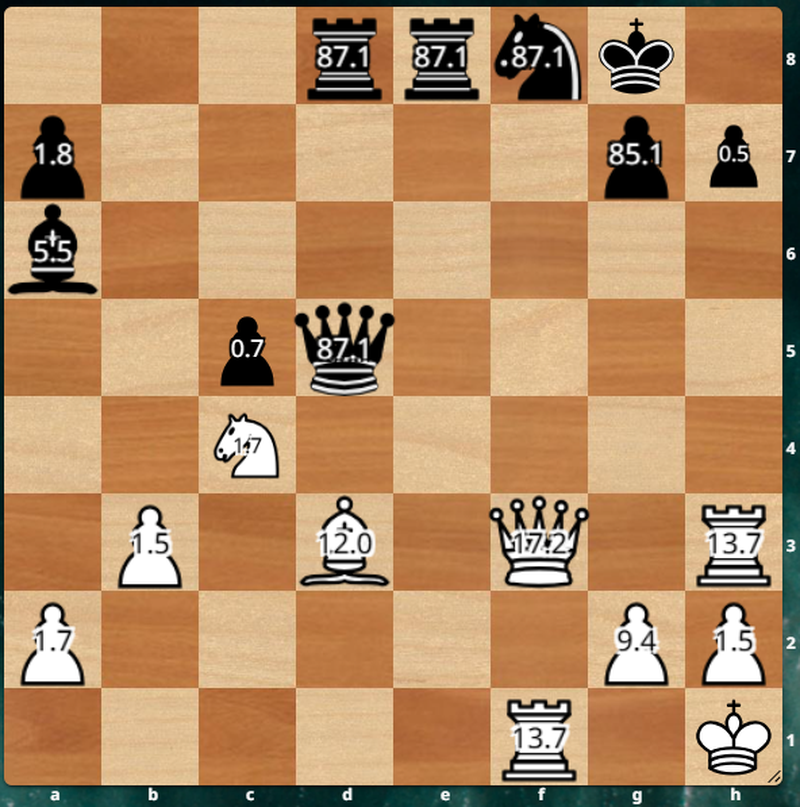
Wow! What does it mean that Black's pieces are so valuable? Does it mean Black is much better? No. It means that every one of those pieces are essential to Black's survival. Their position has crumbled already. What does it mean that the h7 pawn is 0.5 then? It means it won't matter in the grand scheme of things. It's either undefendable, irrelevant or both. Really high values, approaching 100, happen when without a piece mate would be unavoidable.
In this case we can deduce that a valuable White piece should make a move, maybe exchanging itself for a very valuable Black piece. Qxf8, also removing the defender of h7. Rxf8 is forced, Bxh7 checks the king, Kh8 is forced. From then, moving the bishop back and forth leads to a draw, Be4+ captures the queen, but the winning line is exchanging the rooks, removing the defender of the queen and then Be4+.
So how does the board look in the most important moment?
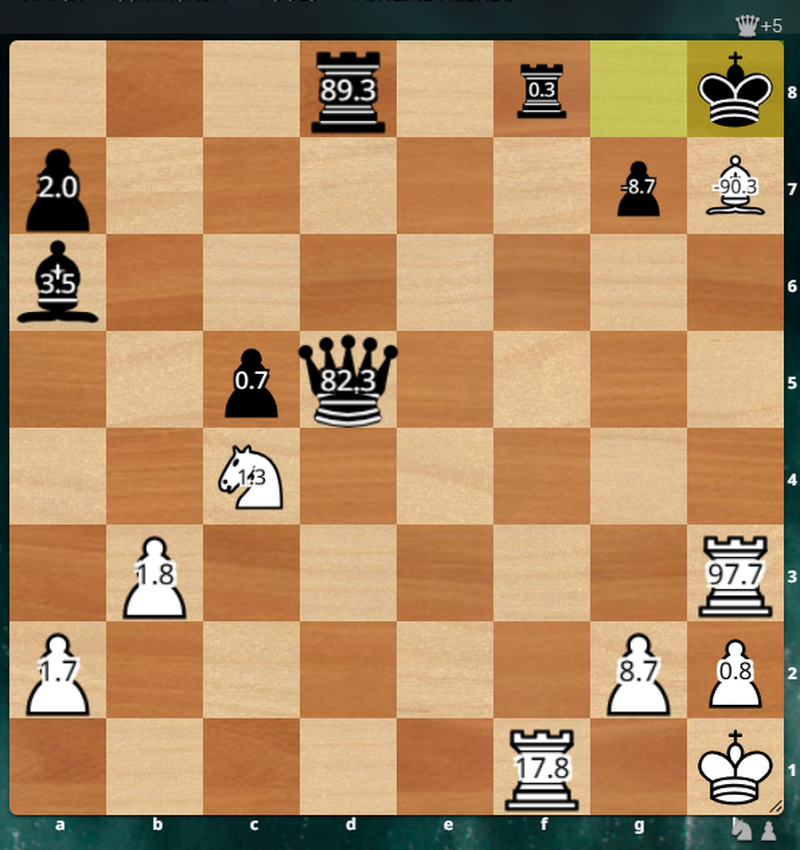
The White bishop has a nonsensical value because removing it would lead to an non valid position. However, the pawn next to it has a negative value which is correct! If the pawn weren't there, it would be a draw with best play. With it there, it's +10. The Black rook on f8 has no value, because there is no reasonable scenario in which it will not be captured.
Conclusion
I will continue to play with this and the command will become available to everybody in LiChess Tools from version v2.4.56, but I think this is a great way of looking at positions. It's expensive, in terms of engine resources and time, but imagine a storyline of what the pieces do during a game, how they increase or decrease in value, some die prematurely, some just don't participate. A life story of game pieces, if you will.
I've published the version with this new command, it's 2.4.56. Type /help to see what's available.
You may also like
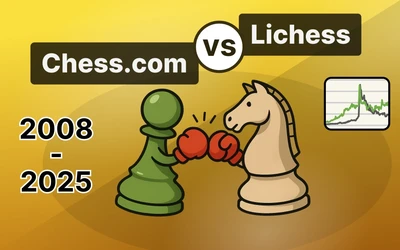 ChessMonitor_Stats
ChessMonitor_StatsWhere do Grandmasters play Chess? - Lichess vs. Chess.com
This is the first large-scale analysis of Grandmaster activity across Chess.com and Lichess from 200… TotalNoob69
TotalNoob69Analysing a single move in a very interesting position in the Closed Sicilian
... how to get more than a move and an eval from Stockfish CM HGabor
CM HGaborHow titled players lie to you
This post is a word of warning for the average club player. As the chess world is becoming increasin… FM MathiCasa
FM MathiCasaChess Football: A Fun and Creative Variant
Where chess pieces become "players" and the traditional chessboard turns into a soccer field TotalNoob69
TotalNoob69LiChess Tools openings that are/were not in Lichess
... how did they do? OnTheQueenside
OnTheQueenside